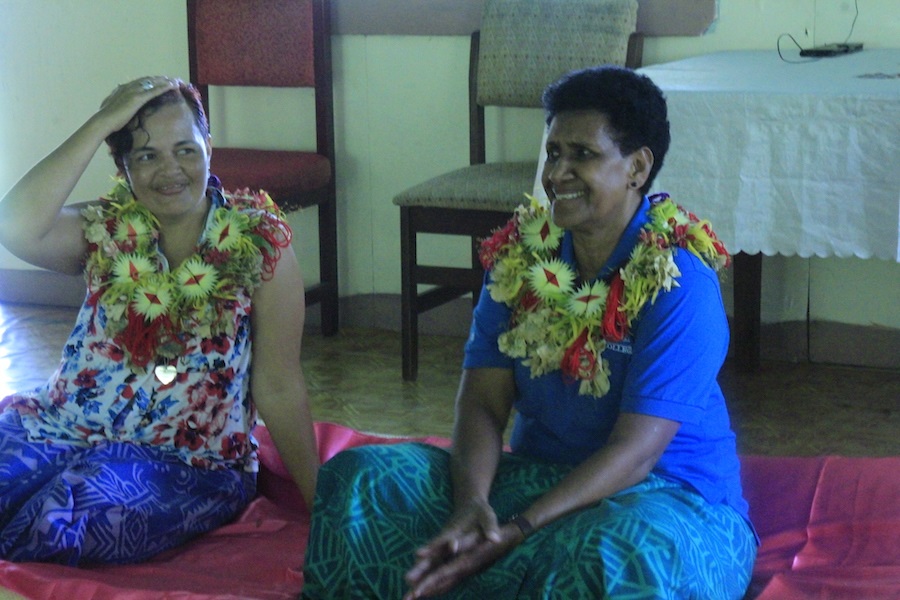Jiuria Visoni anointed our heads with coconut oil and sprayed us with a sweet-scented perfume. Soon after, she garlanded us with the tefui.
All the while, we sat on five layers of fine Rotuman mat feeling royal. Such is the mamasa.
From far away we had come, a team from the Institute of Mission and Research of the Pacific Theological College in Suva.
We are on Rotuma to carry out a Leadership and Management Training with the Methodist Church of Rotuma.
According to Rotuman tradition, our feet is wet from traversing hundreds of miles of ocean to reach Rotuma. But now that we are on dry land, our feet needs drying. A chant broke out, ‘Marie, Marie’ Marie!’
The herald, Inisimo Konau Managreve was calling everyone to hush. ‘Gou tala usiafua!’ (I’m going to speak). ‘Mamiag forau te’ (You have come over the sea.
I am according you our welcome mamasa),’ he said looking at us.
His hands rested on coconut leaf baskets filled with earth-oven roasted pork, taro, and ikou he’e (Octopus and taro leaves baked in thick coconut cream) and fruits in season.
This time it was watermelons and pineapples.
Managreve hails from Savlei Village in Itutiu District.
He called out the names of the Rotuman mats that constituted the Paega.
The paega is the term for the layer of Rotuman mats we sat on. ‘Agruama,’ he said, first calling out the big Rotuman mat that lies at the bottom of the layer.
Then, ‘eape ma’on faua,’ he called out again the second Rotuman mat that was second on the layer. And then the ‘apei’ which is a fine Rotuman mat at the top of the layer.
A pink silken cloth covered the apei.
The paega is the most significant aspect of the mamasa. Managreve told us the paega represents the Rotuman community. Once a visitor sits on the paega, she is now welcomed into the folds of the community.
Considered a Rotuman, with the blessings and protection of the hanua (the land).
She can go about the island like a Rotuman without fear. The mamasa is a traditional ceremony Rotumans perform for all visitors to the island.
It’s like the Fijian I-taukei ‘vakamamaca’ performed for a person after a sea voyage or long overseas trip.
The word mamasa refers to the act of drying a wet person.
The tradition dates back to the days of Rotuman ancestors who spent many days out at sea, fishing.
On their return home, those waiting perform the mamasa ceremony to wash away the salt from their bodies.
To reciprocate the kindness, the fishermen distributed the fish they caught.
The most significant aspects of the mamasa is the paega, the tefui, and the act of anointing with oil.
‘Without the paega there is no mamasa,’ said Managreve.
The seven stars of the tefui, made from the fan palm, represents the seven districts of Rotuma – Itu’ti’u, Oinafa, Noatau, Malha’a, Juju, Pepjei and Itu’muta.
‘It means once you are welcome into the seven districts,’ Managreve added.
Smelling beautiful and feeling welcome, we dug into a feast of the delicious earth-oven roasted food and fruits from the baskets.
Our feet is dry. We are in the eyes of the land, Rotuman!
- Theresa Fox is the communications officer for the Institute of Mission and Research at the Pacific Theological College.



